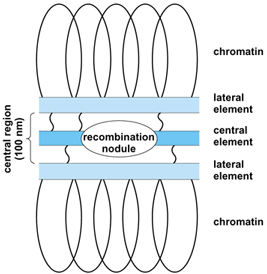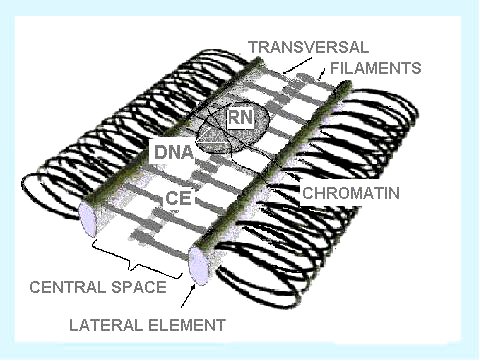Synaptonemal Complex
Synaptonemal Complex Assignment Help | Synaptonemal Complex Homework Help
Synaptonemal Complex
Presence of ribbon like ‘chromosome cores’ in meiotic prophase chromosomes. A study on the salamander Plethodon cinereus showed that the cores were present during synapis. He therefore called them ‘synaptinemal complexes’.
Structure. Under the electron microscope leptotene chromosomes were shown to the have axial filaments which later become transformed into the lateral elements of the SCs. The SCs first appear during zygotene when homologous chromosomes become paired. They are completed by the beginning of pachytene. By diplotene the SCs have mostly disappeared, but remnants may be seen even in diakinesis.
The SC has been described as a tripartite, ribbon like structure, and is situated between pairing homologous chromosomes. It consists of a dense central element, with a dense lateral element on either side. Each lateral element is attached on the inner side of a homologous chromosome.

Each lateral element consists of two proteins filaments, one for each sister chromatid. In preparation treated with deoxyribonuclease the chromatin loops of the chromosomes are dissolved, but the SC persists. Treatment with proteins-dissolving enzymes like trypsin and pronase leaves the SC inact. This indicates that the lateral elements, central elements and LC fibres are composed of protein.

Fate of Synaptonemal Complexes. During diplotene and diakinesis the SCs may either be ejected in large sections, or may disintegrate gradually. The lateral elements of the many SCs may associate to form polycomplexes. At the beginning of diplotene the LC fiber loops and the central elements disappear.
Function of Synaptonemal Complexes. SCs appear during exchange of chromatids in meiosis. Meyer (1964) inferred that they are involved in chiasmata formation and crossing over, on the basis of observations that the SCs are absent in achiasmatic meiosis. However, SCs have been found in certain species in which there is no chiasmata formation. Moses has generalized that the SC must be present for chiasmata formation, but the converse is not necessarily true. The presence of SCs does not necessarily mean that chiasmata are present.
For more help in Synaptonemal Complex please click the button below to submit your homework assignment.